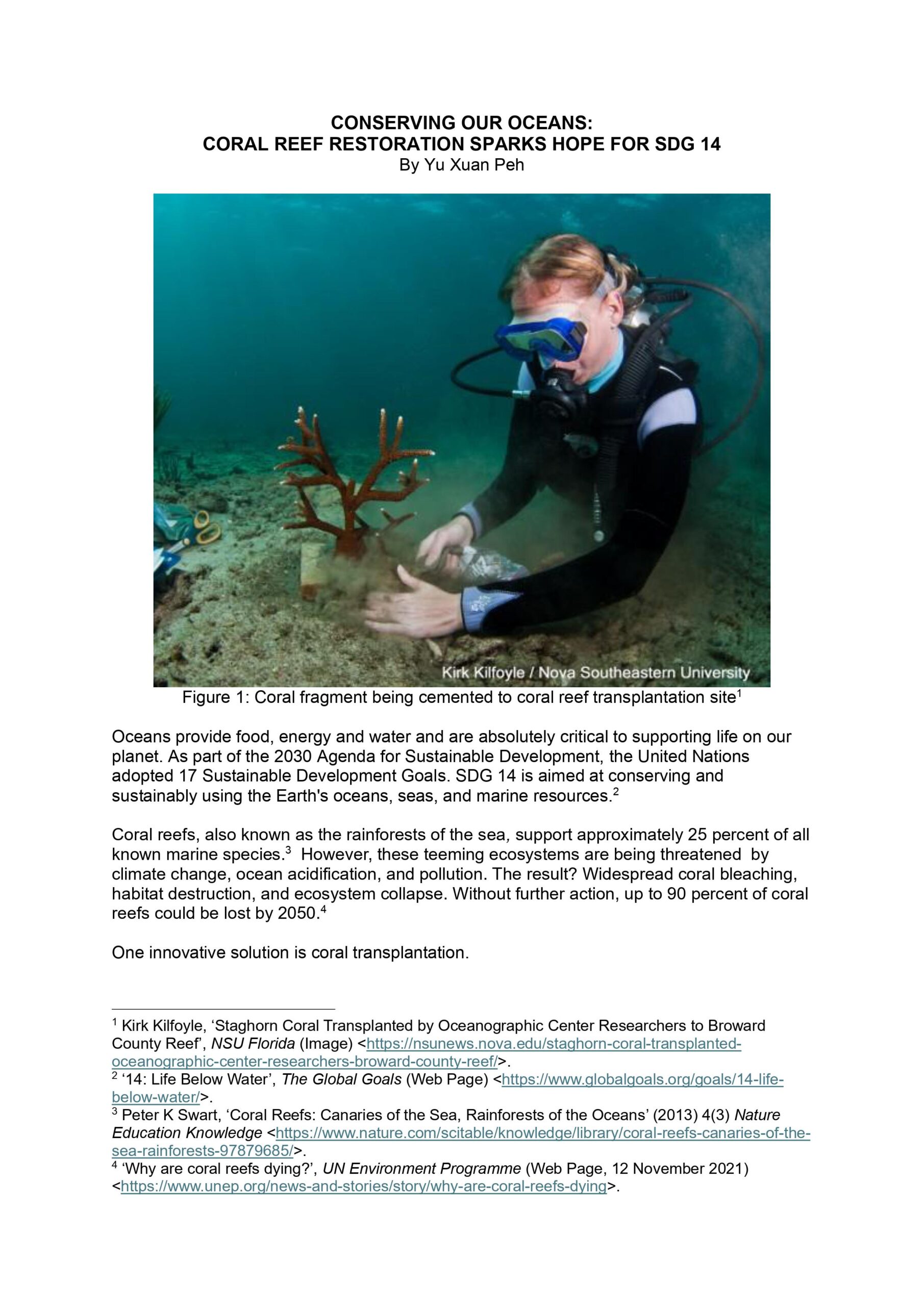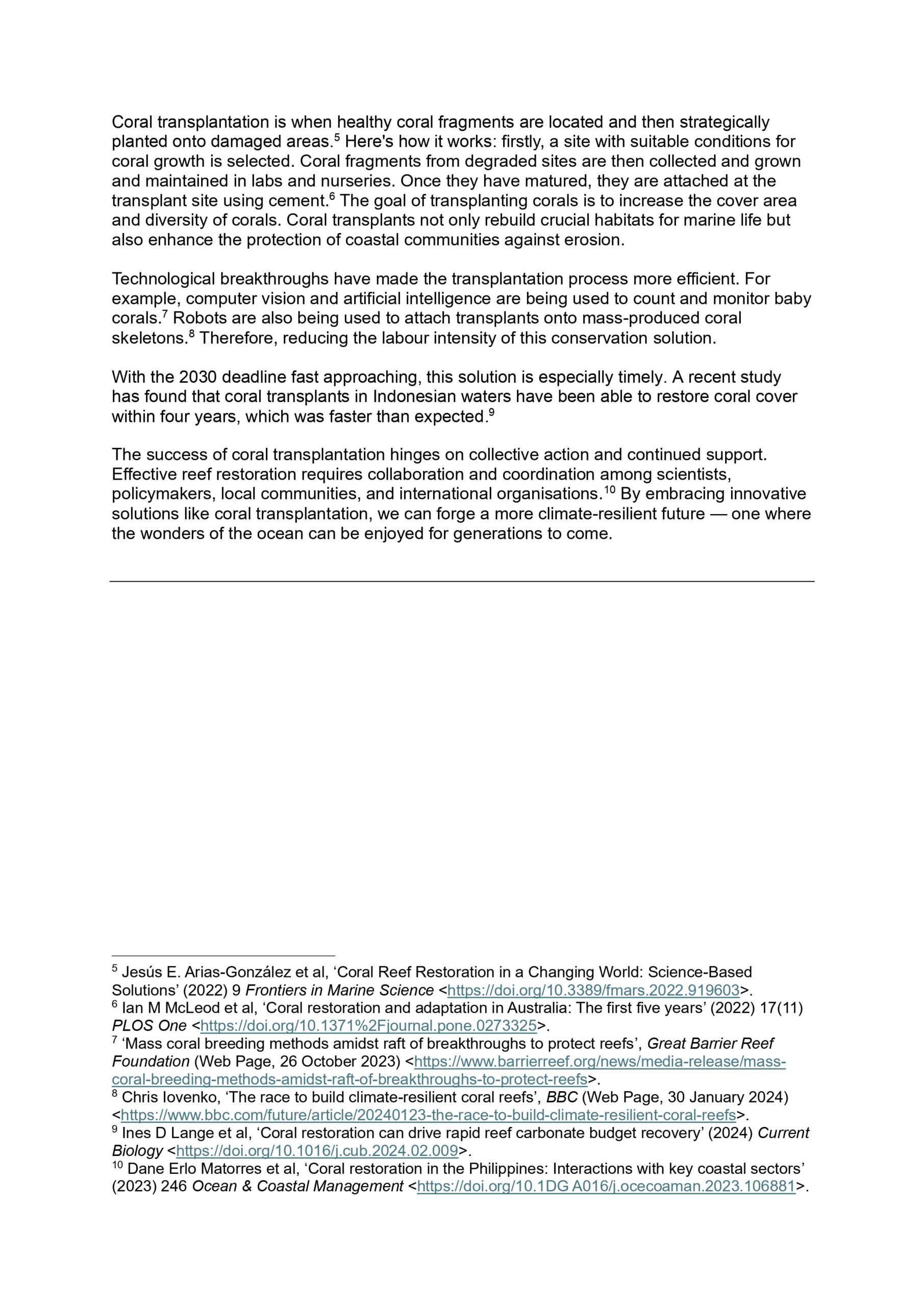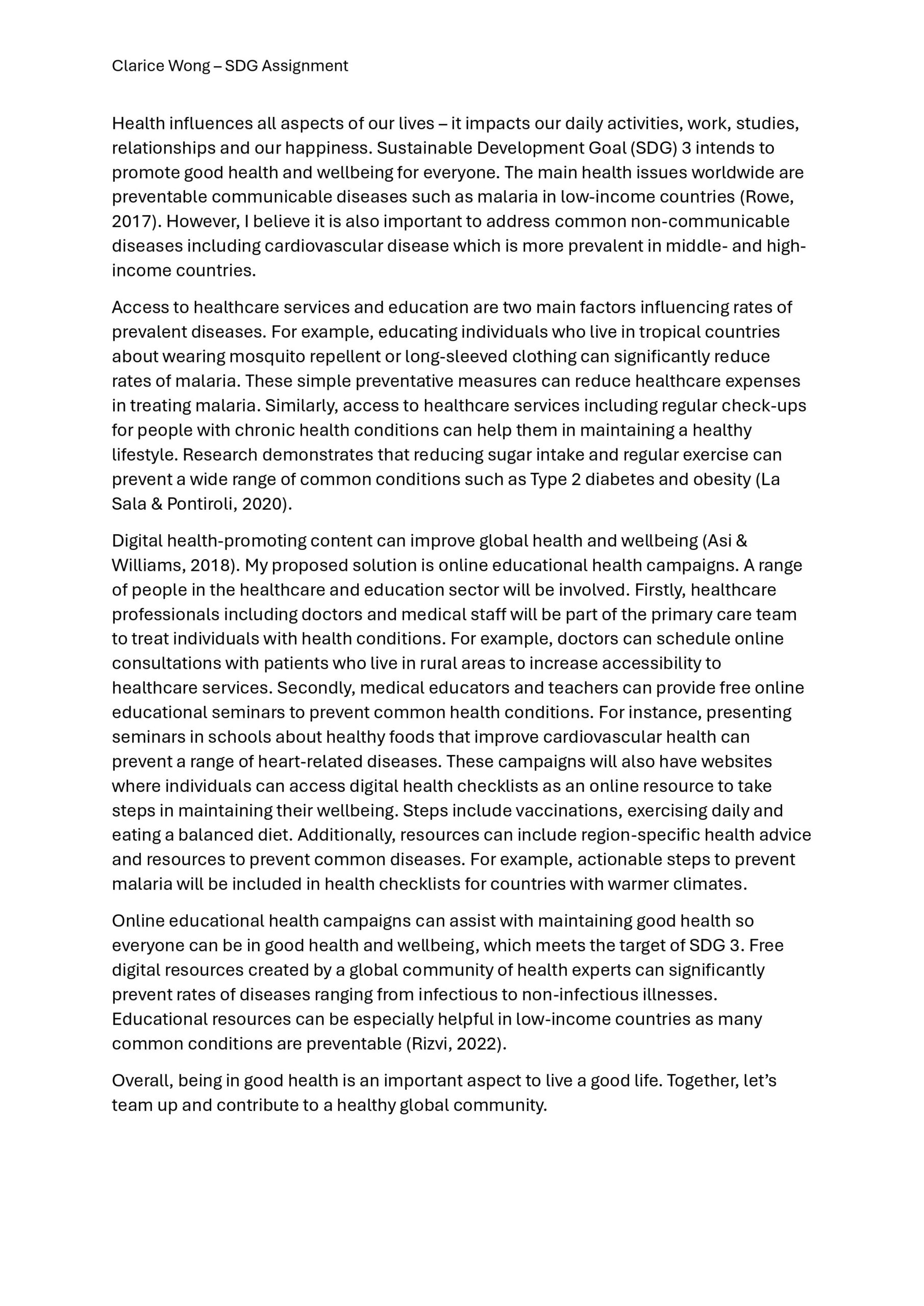





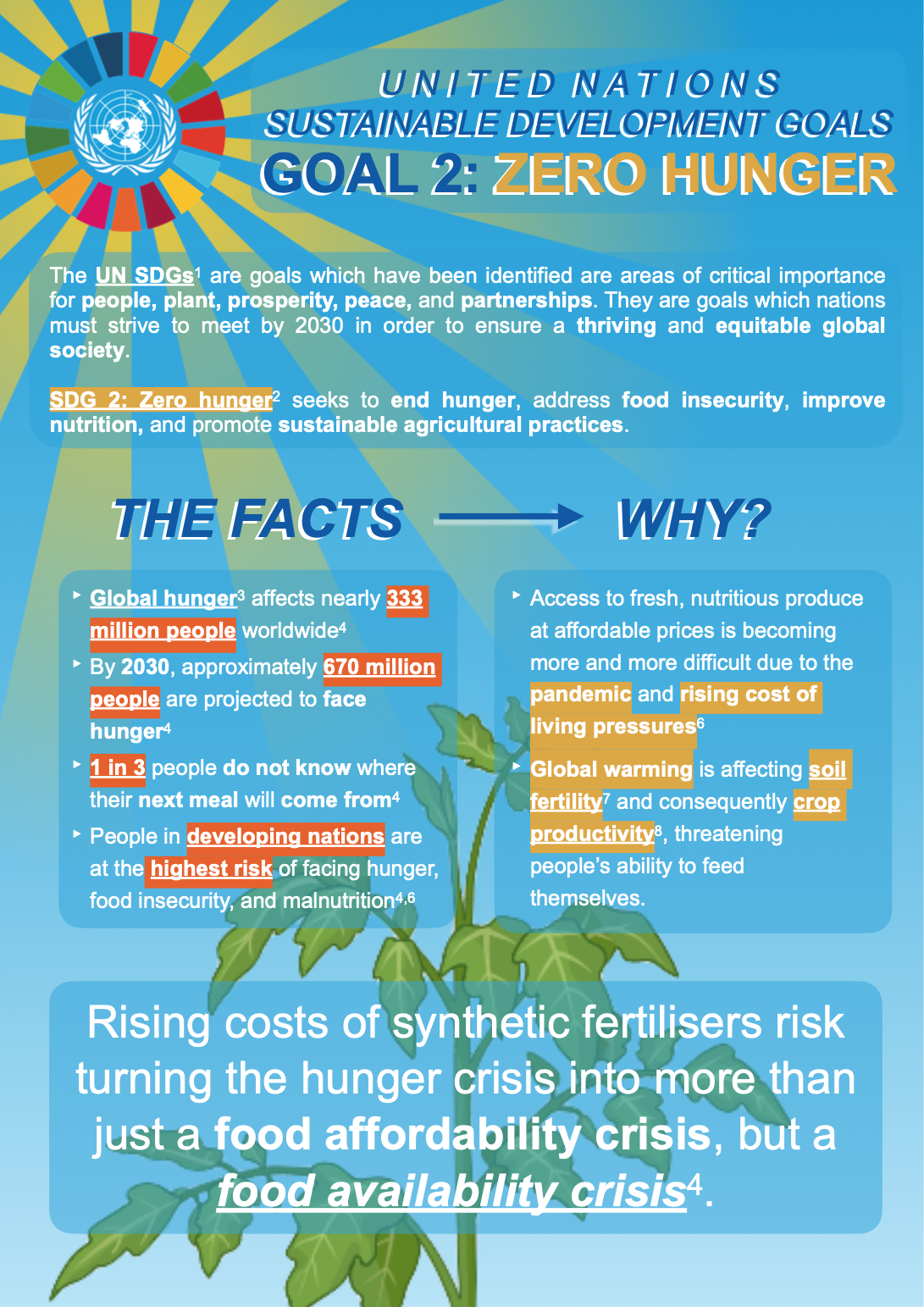

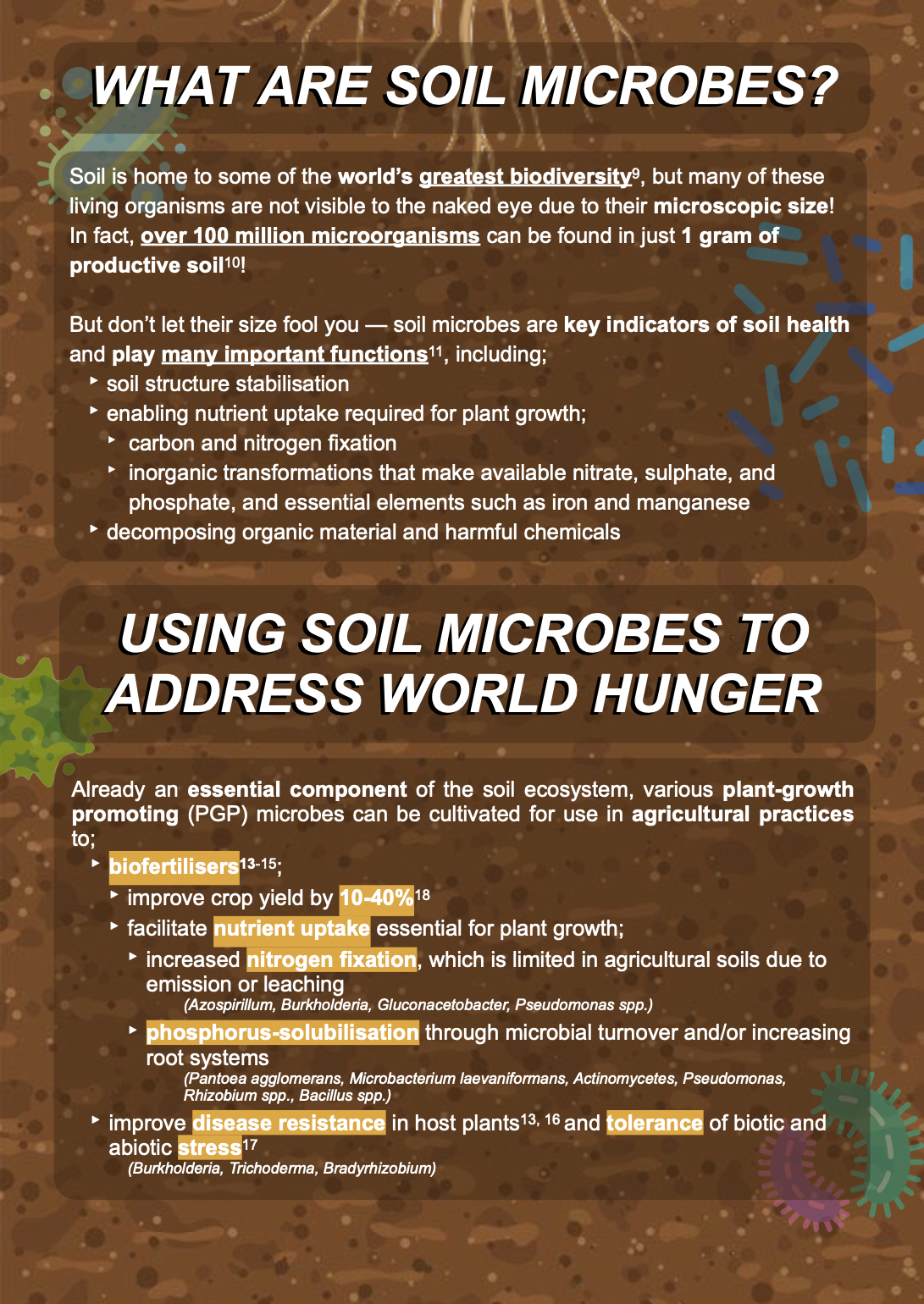
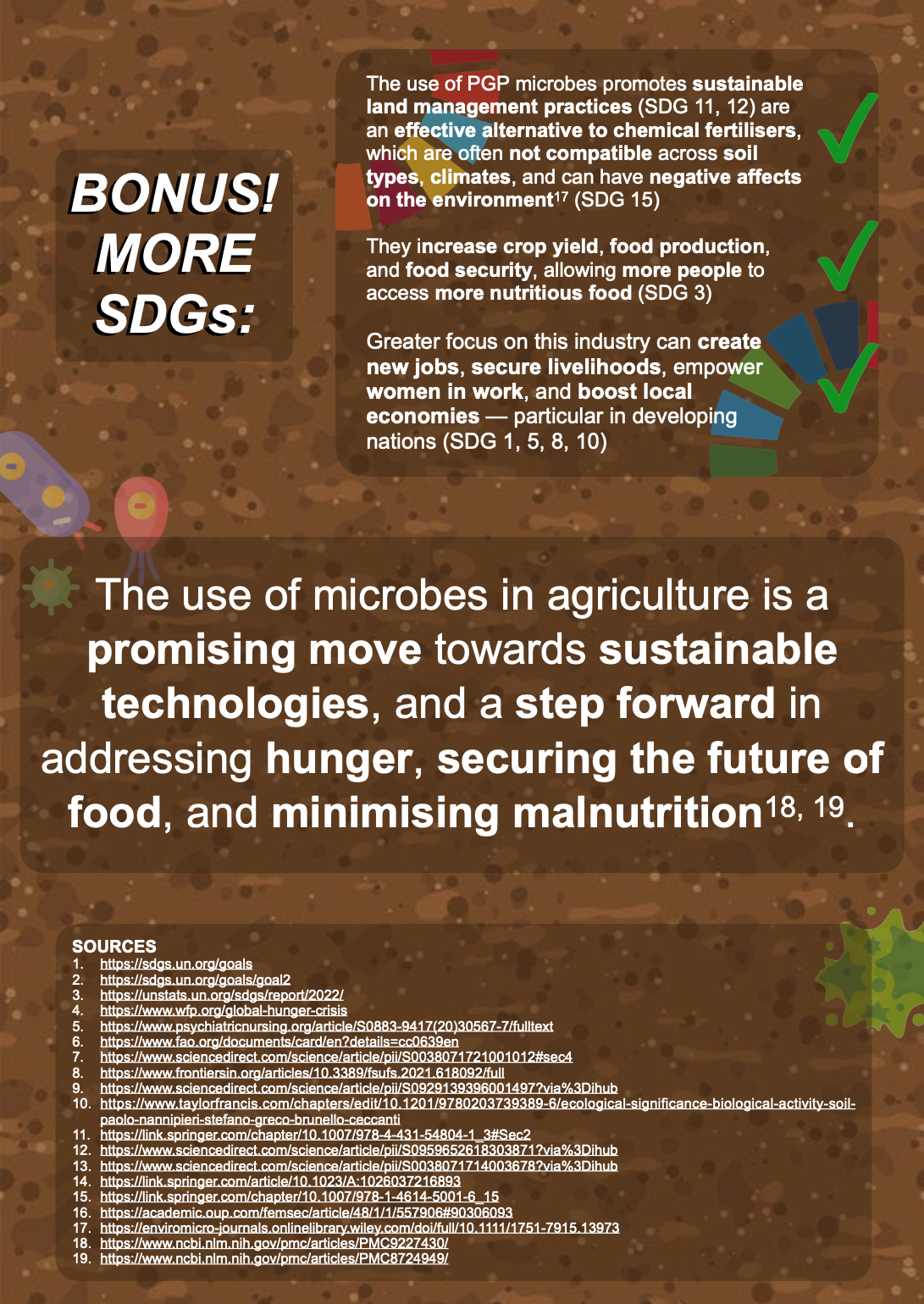
Student submission by Han wen Lin
By 2030, the United Nations established the Sustainable Development Goals (SDGs), which serve as a road map for a sustainable future. SDG 4 aspires to provide all people with inclusive and equitable quality education, as well as to promote lifelong learning. Despite progress, millions of people still lack access to a good education, perpetuating cycles of poverty and inequality. Imagine a world in which education is not a privilege, but rather a fundamental right available to all, regardless of background or location. UNESCO sheds light on the pivotal role of education in achieving all SDGs. It underscores the interconnectedness of education with sustainable development, emphasising that education serves as the foundation for progress across all sectors [1]. From eradicating poverty to promoting gender equality, education is the catalyst for positive change.
Increasing/advancing Technology
One of the solutions lies in the power of technology. With the rapid advancements in digital learning tools and platforms, we have an unprecedented opportunity to democratise education. By harnessing the internet and mobile devices, we can bring quality educational content directly to learners, transcending geographical barriers [2].
Picture a scenario where a child in a remote village has access to the same educational resources as a student in a busy city metropolis. Through online courses, interactive tutorials, and virtual classrooms, we can provide tailored learning experiences that cater to diverse needs and learning styles [3]. But technology alone is not enough, Figure 1 displays the trend the sustainable goals development in 2022, although the increasing and progressing slowly there are still multiple aspects where we are falling behind in achieve quality education worldwide by 2030.
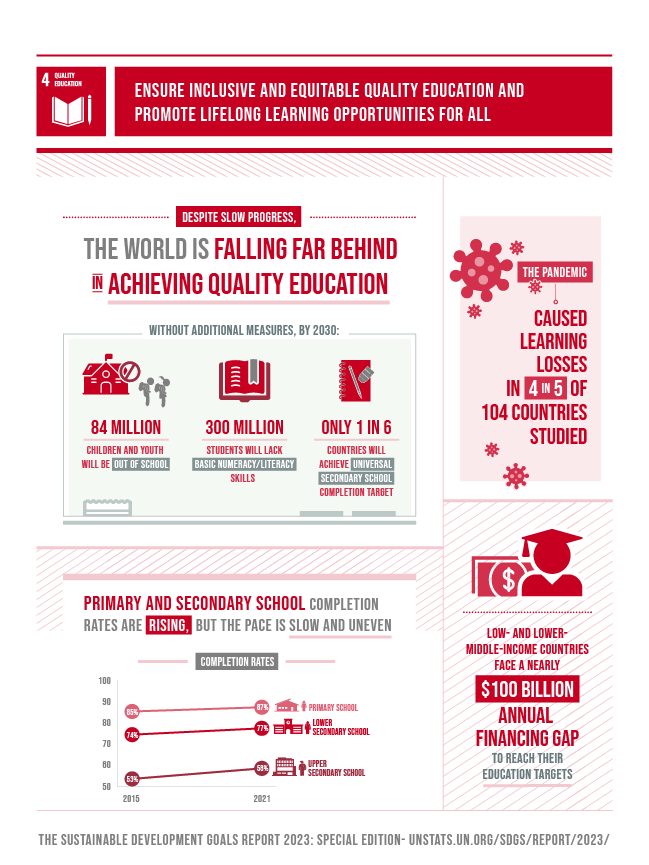
Investing in the education of teachers/more involvement in communities
We can improve the standard of education delivery and promote a culture of lifelong learning by providing teachers with the training and resources they need to support digital learning. This can assist with the difficulties caused by inadequate support in schools. At the source, where parents, educators, and other stakeholders have a critical role to play in determining educational results, is where sustainable change starts. We may establish a cooperative and supportive atmosphere that promotes learning and development by encouraging collaborations. [3].
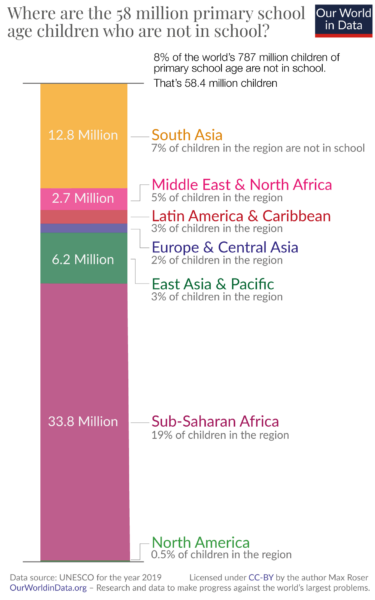
Establish more schools
Another important factor is funding more schools and more community engagement so that we can encourage continuous development for education. Half of all out-of-school children reside in conflict-affected areas. In low-income nations, public education funding is extremely limited: annual spending in a high-income country like Austria is more than 200 times more per student than in a lower-income nation like the Democratic Republic of Congo [4]. Poverty forces children to work causing them to drop out of school or never go at all.
Quality Education requires a multifaceted approach that combines technology, teacher training, and community involvement. This step forward in achieving access to education will help to make global progress towards attaining SDG 4.
References:
[1] United Nations Department of Economic and Social Affairs, “The Sustainable Development Goals Report 2022,” United Nations, 2022.
[2] Max Roser (2021) – “Access to basic education: almost 60 million children of primary school age are not in school” Published online at OurWorldInData.org. Retrieved from: ‘https://ourworldindata.org/children-not-in school’
[3] Quality education. Five principles of inclusive education – Monash Education. Available at:https://www.monash.edu/education/teachspace/articles/five-principles-of-inclusive-education.
[4] Roser, M. (2024) Access to basic education: Almost 60 million children of primary school age are not in school, Our World in Data. Available at: https://ourworldindata.org/children-not-in-school#article-citation
Student submission by Ria Jobanputra
The digital revolution has swept across the globe, rewriting the rules of communication, education, and economic opportunity. Yet, a significant portion of the population remains stuck on the previous version – women. [1] They face barriers to accessing the technology that fuels this revolution, [2] creating an unfinished code that limits their potential.
This isn’t just a software glitch; it’s a critical error in the system. Technology, with its transformative potential, risks becoming a tool for further marginalization. [3] But what if the code could be recompiled?
The UN’s Sustainable Development Goals (SDGs) represent a comprehensive program for a brighter future. SDG 5, focused on gender equality, recognizes the vital role of technology and information communication technologies (ICTs) in empowering women. However, achieving gender equality isn’t just fixing a single bug; it’s rewriting the entire code for a just and equitable world. By bridging the digital divide, we can ensure that women are not left behind in the digital revolution, but rather become active co-creators of a future that benefits all.
Concept:
This initiative tackles the issue of access and gender stereotypes by providing girls in underserved communities with coding and design training using upcycled laptops and tablets.
Target Audience:
The program primarily targets underserved girls aged 10-18, aiming to overcome socioeconomic barriers by providing them with vital technology education and opportunities. Schools and community centres serve as secondary audiences, offering logistical support and incorporating the training into their existing programs.
Project Components:
First, partnering with electronics recycling organizations to collect and refurbish used laptops and tablets, ensuring a sustainable and cost-effective solution. An engaging curriculum, specifically designed for girls and incorporating cultural relevance and creative problem-solving, ignites their interest in coding and design. Mentorship from female tech professionals and students provides crucial role models and guidance, [4] while dedicated “makerspaces” equipped with upcycled devices and materials offer a platform for hands-on learning and project creation.
Benefits:
Upcycling devices provides a sustainable and affordable way to bridge the accessibility gap, ensuring girls in underserved communities have the technology needed to learn. By specifically targeting girls, the program directly addresses the gender gap in STEM fields, fostering a new generation of female tech leaders. The curriculum itself is designed to be creative and engaging, combining coding and design to allow girls to express themselves through technology. The makerspaces create collaborative learning environments, nurturing teamwork, and problem-solving skills. Finally, the entire program promotes sustainability by giving used devices a new life and reducing e-waste.
Implementation Timeline (6 Years):
The first two years focus on building a strong foundation. Partnerships are forged with key players – electronics recyclers for upcycled devices, educational institutions for program integration, and tech companies for potential resources or mentorship. An engaging curriculum designed specifically for girls is developed and piloted with a smaller group to refine the approach. Years three and four see program expansion. Funding is secured to reach multiple schools and community centres, while female tech professionals and students are recruited and trained as mentors. The final two years aim for national impact and long-term sustainability.
Measurable Success:
The number of girls completing the coding and design training directly reflects program reach and completion rates. However, the program goes beyond basic participation. Surveys and interviews will assess the increase in girls’ interest and confidence in STEM fields, gauging the effectiveness of the program in igniting a passion for technology. Engagement and practical application of skills will be measured by the number of projects created within the makerspaces. Ultimately, the program’s true success lies in its ability to empower girls for the future. The number of graduates enrolled in tech-related higher education programs or starting tech-based ventures will track whether the program inspires girls to pursue long-term careers in technology.
Sustainability:
Tech company partnerships would provide ongoing donations of upcycled devices and software licenses, reducing reliance on external funding. A curriculum licensing model would allow other institutions to replicate the program, expanding reach and generating revenue. Graduates would be encouraged to serve as mentors, creating a self-sustaining cycle of knowledge sharing for long-term impact.
In just six years, this initiative offers a powerful solution to bridge the digital divide and empower girls in underserved communities. By equipping them with upcycled devices and an engaging curriculum focused on coding and design, the program shatters stereotypes and ignites a passion for technology within them. This not only fosters their confidence but also paves the way for future careers in the tech sector, directly contributing to UN Sustainable Development Goals (SDGs) 4 and 5 – quality education and gender equality.
The program’s impact extends far beyond individual girls. When women and girls are actively involved in tech, they can contribute to creating user-friendly technology that addresses their needs. This initiative serves as a stepping stone towards achieving the broader goals of the 2030 Agenda – a world where everyone has a chance to thrive. Closing the gender gap in tech isn’t just about empowering women and girls; it’s about creating a better future for all.
References
Student submission by Amelia Reilly
INTRODUCTION
As the push for a more sustainable future gains traction worldwide, a critical area for consideration is education. The sustainable development goal (SDG) four (4) focuses primarily on ensuring all individuals have access to high-quality education and consequently aims to foster opportunities of lifelong learning for everyone by 2023 (1).
UNDERSTANDING THE PROBLEM
Access to inclusive, quality education remains challenging for millions across the world. Barriers are particularly prominent for lower socioeconomic areas, remote areas, refugee camps and countries facing political and financial uncertainty (1). Gender disparities also remain a challenge as recent UIS data recorded nine million girls will never have the opportunity to see the inside of a classroom compared to three million boys (2).
MY PERSPECTIVE
Having previously worked with students at the primary and secondary levels providing private tutoring, this issue has resonated deeply. I have witnessed firsthand the pure joy and transformative power of education on children and young adults. My tutoring experiences have primarily involved working children within my local community, who could afford private tutoring in addition to school fees.
THE IDEA: TUTORING4TOMORROW
To address the challenges highlighted above and assist in the achievement of SDG4 I suggest establishing a tutoring organization in Australia that provides educational resources to communities and allocates 10% of each tutorial session proceeds to a foundation dedicated to achieving quality education.
PARTICULARS
1. Practical implementation
The Tutoring4Tomorrow organisation will team up with a foundation such as ‘Good Neighbours Australia’ to facilitate funding to areas in need (3).
Tutoring 4 Tomorrow will provide 10% of each tutoring session in Australia and forward educational resources to communities who have no access to the internet.
With backing from governmental funding, Tutoring4Tomorrow will organize educational events, during which experienced tutors will travel to communities and deliver educational support.
2. Financials
In my personal experience, this industry is highly profitable due to its non-perishable product (tutorial services) and minimal expenses (educational resources and training).
3. Incentives and perspectives
Government
From the government’s viewpoint, the funding allocated to Tutoring4Tomorrow serves as a future investment. Research from the Australian Government Productivity Commission demonstrates that higher education levels, both domestically and internationally, are linked to reduced illness rates and higher earnings (4).
Additionally, completion of secondary education or higher is shown to boost wages by 10 to 14 percent’s as seen in figure 1.1 (4), thereby boosting economic activity and increasing workforce participation.
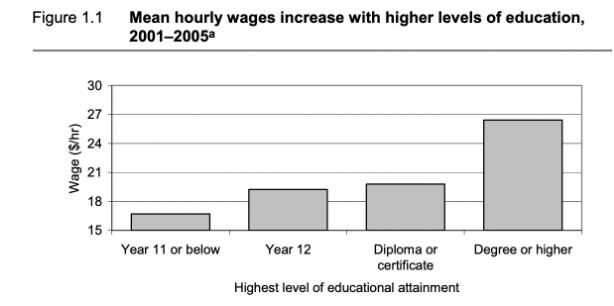
Tutoring4Tomorrow
From the perspective of the organization’s standpoint, this serves as a marketing incentive, as clients are more inclined to invest in tutoring services that not only offer academic support but also contribute to aiding individuals affected by educational deficiencies.
CONCLUDING
To make this vision a reality in the next six years partnerships with stakeholders including the government, tech companies, educational institutions and not-for-profit organisations are essential. Together, we can make provide the joy and transformative power of education I have experienced here in Melbourne accessible to millions of susceptible children around the world.
References
Student submission by Vedant Gadhavi
This article will give a key insight over the sustainable development goal of achieving zero hunger by focusing on reducing waste and employing sustainable food production. Studies have revealed that there have been around 691-783 million people who have faced hunger crisis. There has been a significant rise in hunger compared to the COVID-19 pandemic (1). People have not been able to access healthy food and that has led to millions of children suffering from malnutrition. Government and policymakers must understand the trends to ensure proper shape of agrifood systems to every citizen living in rural and urban areas. Food security should be taken as the key factor to solve this issue because there is prevalence of child stunting in rural areas by 35.8% alongside 22.4% in urban areas (2). It is vital to achieve food security because food security not only includes the physical availability and access to the food but also includes stable utilization of nutrients in the body from the food (3). 
We can achieve this goal by 2030, by implementing advanced technologies that increase productivity and production. This will be achieved through extensive research across various disciplines of science to accelerate the production using new technologies (4). To achieve the goal, it becomes essential to ensure sustainable food production systems. As rising temperatures have been a fundamental factor in producing a negative effect on agricultural sector (5). It becomes vital to strengthen the capacity of the crop to adapt and withstand extreme weather conditions. This will make sure that the production of crops is efficient will solve the root cause of the problem and solve hunger issues in the world. This will also be helpful in keeping a check over agricultural prices and avoid inflation because food price inflation has exceeded overall inflation in 62.9% of the 167 countries as per the available data reported (6).
 There has been 13% of food produced being lost between harvest and retail as well as around 17% of total food is being wasted in households (7). The most promising step towards reducing food hunger is to limit food loses and waste. This can be done through using intelligent packing of food to reduce food waste which can feed an additional billion people globally. There should be openings of new food donation centres to avoid food wastage as well making “best before” labels easily seen and less confusing. These practices will make sure to eliminate food wastage and provide access of food for all. These steps will turn out to be impactful against the ongoing food hunger crisis and will be a positive change towards attaining zero hunger.
There has been 13% of food produced being lost between harvest and retail as well as around 17% of total food is being wasted in households (7). The most promising step towards reducing food hunger is to limit food loses and waste. This can be done through using intelligent packing of food to reduce food waste which can feed an additional billion people globally. There should be openings of new food donation centres to avoid food wastage as well making “best before” labels easily seen and less confusing. These practices will make sure to eliminate food wastage and provide access of food for all. These steps will turn out to be impactful against the ongoing food hunger crisis and will be a positive change towards attaining zero hunger.
REFERENCES:
Student submission by Jenae Daglas
In a world where sustainability is becoming increasingly crucial, governments around the globe have teamed up to tackle pressing global challenges and promote sustainable development worldwide. One of the major initiatives on this front is the introduction of Sustainable Development Goals (SDGs), aimed at incorporating sustainability into various aspects of life while encouraging collaboration on a global scale.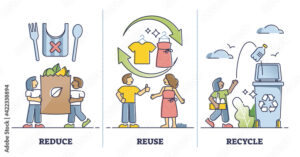
One of these goals, SDG 12, titled “Sustainable Production and Consumption,” emphasises the importance of significantly reducing waste generation by 2030 through prevention, reduction, recycling, and reuse. This goal shines a spotlight on the disproportionate use of resources throughout production processes.
Though the target year for achieving SDG 12 is 2030, there’s no reason why we can’t start making progress now. With teamwork and community spirit, we can make significant strides in just a few short years.
Introducing the solution: the community swap shop, a lively hotspot where goodies get a second chance at love instead of taking the landfill route. These ventures have proven to ace it, with Leeds University leading the charge with wildly successful weekly swap shops, paving the way for everyone to join in on the fun!
So, how does it work? Let’s break it down:
Establish a Local Hub: First things first, we need to find a central location in the community, whether it’s a community centre, library, or local business, that can serve as the heart of the swap shop. Accessibility is key, ensuring that everyone in the community can easily drop by to participate.
Promote Participation: Next, let’s spread the word and encourage community members to donate items they no longer need. By emphasising the environmental benefits of waste reduction and reuse, we can inspire people to join in and create positive change.
Organise Swapping Events: With donations pouring in, it’s time to host some swapping events! Organise items by category to make browsing and swapping a breeze. From clothing swaps to book exchanges, there’s something for everyone.
Now, let’s talk about the benefits:
Reduces Waste: By giving items a second chance through swapping, we’re keeping them out of the trash and reducing waste in our communities.
Promotes Resourcefulness: Swapping encourages us to get creative and find new uses for existing items, fostering a culture of reuse and repair.
Saves Money: Who doesn’t love saving a few bucks? Swapping allows community members to access items they need without breaking the bank.
Raises Awareness: Perhaps most importantly, swap shops raise awareness about the environmental impact of our consumption habits and empower individuals to make more sustainable choices in their daily lives.
So it’s clear, community swap shops offer a simple yet effective solution to help achieve SDG 12 and promote sustainability in our communities. By coming together and embracing the power of reuse, we can make a positive impact on the planet, one swap at a time. So, what are you waiting for? Let’s swap our way to a greener future!
